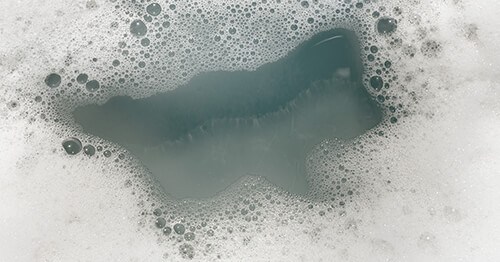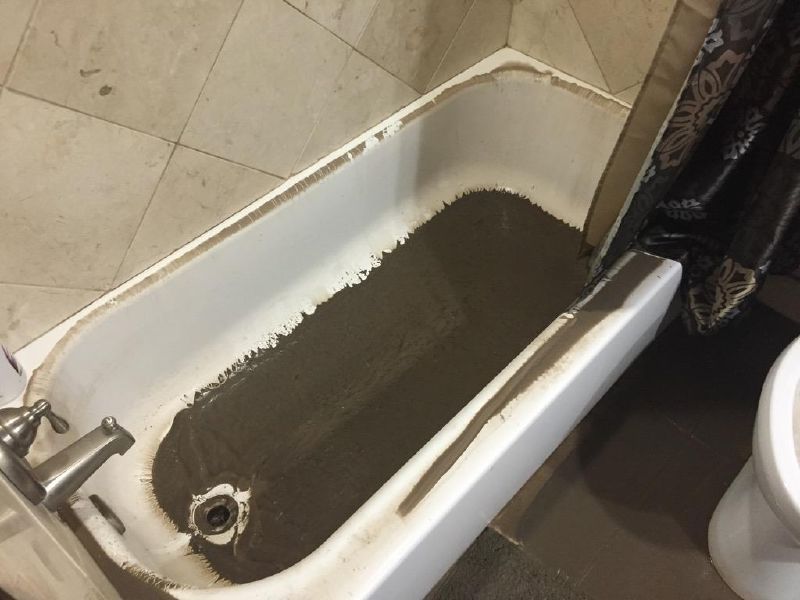My Guide to Sewage Emergence in the Bathtub
My Guide to Sewage Emergence in the Bathtub
Blog Article
What're your opinions on Why sewage is coming up through your bathtub?

Sewer backup in the bath tub can be a distressing and unsanitary issue for any homeowner. Not only is it inconvenient, however it additionally postures major health and wellness threats and suggests underlying issues with the plumbing system. Comprehending why sewage is turning up via the bath tub is critical for taking ideal action to address the issue efficiently.
Intro to the Issue
Common Factors for Sewer Back-up
Obstructions in the Drain Line
One of the most common reasons for sewer backup is an obstruction in the sewer line. This can take place due to the accumulation of debris, oil, or international items in the pipes, avoiding correct circulation and creating sewage to back up right into your tub.
Tree Root Breach
Tree roots seeking dampness and nutrients can penetrate drain lines via tiny splits or joints. In time, these origins can expand and increase, triggering substantial damage to the pipes and bring about sewage backup concerns.
Recognizing the Problem
When sewage draws back up right into the tub, it's a clear indicator of an issue with the drain system. The wastewater that needs to be moving far from your home is instead finding its way back right into your living space, which can lead to significant damage and health hazards.
Prospective Causes
Numerous variables can add to sewage back-up in the bath tub. From blockages in the drain line to problems with the plumbing framework, determining the root cause is important for finding an option.
Aging Infrastructure
Older homes may have dated plumbing systems that are extra vulnerable to rust, fractures, and damage. As pipelines age, they come to be more susceptible to leaks and blockages, enhancing the chance of sewage backup events.
Heavy Rainfall or Flooding
During durations of heavy rainfall or flooding, the drain system might come to be overloaded with excess water, triggering back-ups and overflows. This can lead to sewage backing up into tubs and other components inside the home.
Indicators of Sewage Back-up
Foul Odors
Undesirable odors rising from drains pipes or fixtures, especially in the washroom, might indicate sewer backup problems. These smells are typically strong and persistent, signifying a trouble that needs instant focus.
Slow Draining Fixtures
Bath tubs, sinks, and commodes that drain pipes slowly or not in all could be experiencing sewage back-up. If numerous components are affected simultaneously, it's likely that the concern originates from a common factor, such as the major drain line.
Gurgling Sounds
Unusual gurgling or bubbling noises originating from drains when water is running somewhere else in the house are a sign of air entraped in the plumbing system. This air buildup can arise from sewer backup and need to be explored quickly.
Wellness Threats Associated with Sewage Backup
Contamination of Water Supply
Sewage back-up can contaminate the supply of water in your house, posturing a major health and wellness risk to you and your household. Exposure to contaminated water can lead to intestinal concerns, skin infections, and other illnesses.
Mold and mildew Development
Moisture from sewage backup can create excellent conditions for mold and mildew development in your house. Mold and mildew spores can intensify breathing troubles and trigger allergic reactions in sensitive people, making prompt clean-up important.
Spread of Condition
Sewage contains harmful bacteria, infections, and parasites that can trigger a range of diseases, including hepatitis, cholera, and gastroenteritis. Entering contact with sewage or polluted surfaces places you in jeopardy of infection.
Cleaning Up After Sewage Back-up
Disinfection Procedures
Completely disinfect and sanitize impacted areas after sewer backup to remove harmful bacteria and protect against mold and mildew growth. Usage appropriate cleaning products and safety equipment to guarantee risk-free and effective cleanup.
Reconstruction of Impacted Areas
Fix any type of damages to floor covering, walls, or components triggered by sewage back-up. Depending upon the degree of the damage, you may require to replace carpeting, drywall, or various other products to recover your home to its pre-loss condition.
Immediate Actions to Take
Shutting Off Supply Of Water
In case of sewage back-up, it's vital to shut off the water to stop more contamination and damage. Find the primary water shutoff valve in your house and closed it off till the problem can be solved.
Getting In Touch With an Expert Plumber
Taking care of sewer back-up is not a do it yourself work. Get in touch with a licensed plumber with experience in handling sewage-related concerns to assess the scenario and perform necessary repair services or clean-ups.
Preventing Contact with Polluted Water
Up until the sewer back-up is solved, avoid contact with infected water to avoid the spread of microorganisms and virus. Put on protective equipment if you must remain in the afflicted area and clean your hands extensively afterward.
Safety nets
Normal Maintenance of Sewage System Lines
Arrange normal evaluations and maintenance of your drain lines to determine and attend to possible concerns before they rise right into significant troubles. This can include clearing out particles, examining for tree root invasion, and repairing any kind of broken pipes.
Mounting Bayou Shutoffs
Consider installing bayou valves in your plumbing system to stop sewage from receding into your home throughout periods of heavy rainfall or flooding. These shutoffs automatically close when water starts backing up, securing your property from contamination.
Correct Disposal of Household Waste
Prevent purging anything aside from toilet paper and human waste down the toilet to stop blockages and blockages in the drain line. Dispose of oil, oil, and other family chemicals effectively to decrease the danger of plumbing issues.
Why is there sewage coming up from my bathtub?
These gas fumes, like hydrogen sulfide – the gas that leaves a rotten egg smell in its wake and is highly flammable and toxic – can be hazardous to your health. Sewage poses major health risks as it contains harmful bacteria and microorganisms that can be dangerous if exposed to them.
Sewage cleanup should be considered an emergency.
So, why is there sewage coming up from your bathroom? There are several common causes of a sewage backup.
The most common reason for sewage coming up through your bathroom is a clogged sewer line. All plumbing in your bathroom connects to a single drain pipe that leads to the sewer line under your house. This drain line carries all wastewater and sewage away from your home to the city’s sewer system.
When the sewer line becomes clogged or blocked, wastewater has nowhere to go but back toward your house. This results in sewage coming up through your drains, often starting with your tub or shower.
Another culprit may be the sewage ejector pump, which is used when a bathroom, laundry room or any other type of plumbing fixture is located below the level of the main sewer or septic line flowing from the house. Most commonly, ejector pumps are used in homes with basement bathrooms or laundry rooms.
When you experience sewage coming up through your bathtub, it’s always best to contact a professional. Attempts to fix a clogged sewer line without experience often lead to more plumbing damage.
Make sure that no one enters the affected area, and open as many windows as possible. Pre-treat the flooded area with small splashes of chlorine bleach. Wear protection gear like rubber gloves, a mask, and water-resistant coveralls.
https://www.shawlocal.com/the-herald-news/sponsored/2022/08/17/omega-plumbing-10199038/

As an avid reader about , I assumed sharing that chunk was beneficial. Loved our entry? Please quickly share it. Help another person discover it. Kudos for being here. Come back soon.
Request A Quote
Report this page